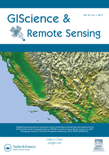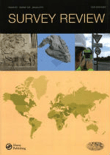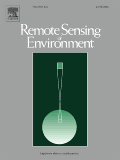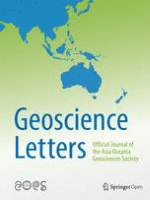
Remote Sensing
metrics 2024
Connecting Global Researchers for a Deeper Understanding of Earth
Introduction
Remote Sensing is a highly esteemed journal published by MDPI, dedicated to the domain of Earth and Planetary Sciences. With an impressive impact factor reflected in its rank of #16 out of 195 in the general Earth and Planetary Sciences category, this journal achieves a commendable 92nd percentile among its peers, indicating its significant contribution to the field. Since its inception in 2009 as an Open Access journal, it has enabled researchers, professionals, and students from around the globe to access high-quality, peer-reviewed articles that delve into the latest advancements in remote sensing technologies, methodologies, and applications. Based in Switzerland, Remote Sensing serves as a vital platform for disseminating innovative research that supports and enhances our understanding of Earth's processes and environments, ensuring scientific knowledge remains freely accessible and impactful.
Metrics 2024
 -
- 4.20
4.20 4.90
4.90 -
-Metrics History
Rank 2024
IF (Web Of Science)
JCI (Web Of Science)
Quartile History
Similar Journals

Journal of Applied Remote Sensing
Illuminating the Earth's Secrets with Cutting-Edge ScienceJournal of Applied Remote Sensing, published by SPIE-SOC PHOTO-OPTICAL INSTRUMENTATION ENGINEERS, stands at the forefront of research in the interdisciplinary field of applied remote sensing, focusing on innovative applications and advancements in technology that support our understanding of the Earth's systems. Established in 2007, this journal has quickly gained recognition, currently holding a Q2 ranking in the Earth and Planetary Sciences category, reflecting its influence and quality within the academic community, with a Scopus ranking of #68 out of 195 in General Earth and Planetary Sciences. The journal provides a robust platform for researchers, professionals, and students to disseminate their findings, ensuring open avenues for knowledge exchange in a field that increasingly impacts environmental monitoring, disaster management, and resource management. With its E-ISSN 1931-3195, the Journal of Applied Remote Sensing remains committed to advancing scholarly communication, fostering innovations that respond to real-world challenges, and enhancing remote sensing applications across diverse sectors. The journal operates from its headquarters in Bellingham, WA, USA, and aims to portray cutting-edge research that enriches the academic literature and informs policy and practice.

European Journal of Remote Sensing
Exploring New Horizons in Applied Mathematics and Remote SensingThe European Journal of Remote Sensing, published by Taylor & Francis Ltd, stands as a pivotal resource in the domains of applied mathematics, atmospheric science, and earth sciences. Since its transition to Open Access in 2012, the journal has facilitated unrestricted knowledge dissemination, fostering collaboration and innovation among researchers. With a notable impact factor reflected in its quartile rankings—achieving Q2 in applied mathematics and atmospheric science, and Q1 in miscellaneous environmental science—the journal is a respected platform for high-quality research. Based in the United Kingdom, it encompasses a wide range of topics related to remote sensing technologies and their application in environmental monitoring. Researchers and professionals in these fields will find the journal indispensable for its commitment to advancing scientific understanding and promoting the use of remote sensing methodologies in tackling contemporary environmental challenges.

Revista de Teledeteccion
Exploring the frontiers of satellite technology.Revista de Teledeteccion, published by UNIV POLITECNICA VALENCIA, EDITORIAL UPV, is a leading Open Access journal dedicated to the interdisciplinary field of remote sensing and its applications. Since its inception in 2010, this journal has provided a vital platform for researchers, professionals, and students to disseminate groundbreaking findings, foster collaboration, and engage with contemporary challenges in Earth and Planetary Sciences as well as Geography, Planning, and Development. With a Q3 ranking in both fields as of 2023, it serves as an essential resource for advancing knowledge and innovative practices in hi-tech remote sensing methodologies. The journal covers a broad spectrum of topics, from satellite imaging techniques to environmental monitoring, making it an invaluable asset for those interested in harnessing remote sensing technologies to address real-world issues. The editorial office is located in Valencia, Spain, and the journal aims to bridge the gap between theoretical research and practical application, enriching the scientific community's understanding and capabilities in this dynamic domain.

GIScience & Remote Sensing
Elevating Research in Remote Sensing and GIScienceGIScience & Remote Sensing, published by Taylor & Francis Ltd, stands as a leading journal in the realm of Earth and Planetary Sciences, holding a prestigious Q1 ranking. Since its transition to Open Access in 2022, the journal has significantly broadened its reach, enabling researchers, professionals, and students across the globe to disseminate and access cutting-edge research related to geographic information science and remote sensing technologies. With a focus on publishing high-quality, peer-reviewed articles that contribute to the understanding of the Earth’s processes, environments, and interactions, this journal not only supports advancements in scientific knowledge but also fosters interdisciplinary collaboration. Based in the United Kingdom, GIScience & Remote Sensing continues to pave the way for innovative methodologies and applications, solidifying its vital role within the scientific community.

SURVEY REVIEW
Bridging Academia and Industry with Essential ResearchSURVEY REVIEW is a distinguished journal published by Taylor & Francis Ltd, focusing on a diverse range of disciplines including Civil and Structural Engineering, Computers in Earth Sciences, and Earth and Planetary Sciences. With an ISSN of 0039-6265 and an E-ISSN of 1752-2706, this journal has been a vital resource for scholarly communication since its inception in 1963. Positioned within the Q2 and Q3 quartile categories according to the latest rankings, it is recognized for its significant contributions to advancing knowledge in multiple fields, specifically holding a rank of 64/159 in Earth and Planetary Sciences and 32/73 in Computers in Earth Sciences. Researchers, professionals, and students benefit from its critical insights into complex engineering and scientific challenges. Although SURVEY REVIEW is not open access, it remains a highly cited journal, making it an essential avenue for disseminating pivotal findings that impact both academia and industry practices.

Revue Internationale de Geomatique
Innovating Spatial Data Solutions for a Changing WorldRevue Internationale de Geomatique (ISSN: 1260-5875, E-ISSN: 2116-7060) is a prestigious journal published by TECH SCIENCE PRESS, dedicated to advancing the field of geomatics. This journal serves as a vital platform for disseminating significant research findings, cutting-edge methodologies, and innovative applications within the realm of spatial data and technology. With an emphasis on interdisciplinary studies, it fosters collaboration among researchers, professionals, and students across various domains, including environmental science, urban planning, and geographic information systems (GIS). Although not an open-access journal, Revue Internationale de Geomatique maintains a rigorous peer-review process ensuring the publication of high-quality articles that contribute to the evolving landscape of geomatics. Given its relevance and commitment to scholarly excellence, this journal is a crucial resource for advancing knowledge and practices in the ever-growing field of spatial information science.

REMOTE SENSING OF ENVIRONMENT
Unlocking the Secrets of Our Planet’s Changes.REMOTE SENSING OF ENVIRONMENT, published by Elsevier Science Inc, is a premier academic journal specializing in the interdisciplinary field of earth observation and remote sensing technologies. With an impressive impact factor and classified in the Q1 category for Computer Science in Earth Sciences, Geology, and Soil Science as of 2023, this journal serves as a vital resource for researchers, professionals, and students alike. The journal, which has been disseminating high-quality research since its inception in 1969, provides a platform for the exploration of innovative methodologies and applications in the assessment of environmental changes and resource management through advanced imaging techniques. While not an open-access journal, REMOTE SENSING OF ENVIRONMENT offers access options that make cutting-edge research accessible to its audience. Its strategic focus on critical issues pertaining to environmental monitoring and sustainable practices underscores its role in enhancing our understanding of the planet’s dynamics.

Geoscience Letters
Fostering Collaboration for a Better PlanetGeoscience Letters, published by Springer, is a prominent open-access journal in the field of Earth and Planetary Sciences, recognized for its dedication to advancing knowledge and research in this vital area of study. With a reported impact factor that reflects its esteemed position—ranking in the Q1 quartile of Earth and Planetary Sciences, particularly as the journal ranks #48 out of 195 in the general category according to Scopus—the journal serves as a vital resource for researchers, professionals, and students. Since its inception in 2014, Geoscience Letters has facilitated the dissemination of high-quality research and critical insights, aiming to bridge the gap between scientific discovery and societal needs. Its commitment to open access ensures that the latest findings are readily available to a global audience, thus enhancing collaboration and innovation within the geosciences community.

Remote Sensing in Ecology and Conservation
Advancing ecological insights through cutting-edge technology.Remote Sensing in Ecology and Conservation is a pioneering journal published by WILEY that has been a beacon of open-access research since 2015. With an E-ISSN of 2056-3485, this journal stands at the forefront of the intersection between ecological research and technological innovation. It is recognized for its significant impact, boasting Q1 rankings across several prestigious categories in 2023, including Computers in Earth Sciences and Ecology, emphasizing its commitment to high-quality, influential scholarship. The journal provides a platform for researchers and practitioners to share their findings in remote sensing applications that advance ecological conservation efforts. Encompassing a broad scope that includes studies on landscape changes, biodiversity assessments, and environmental monitoring, it serves as an essential resource for education and practice in the field. With impressive ranks in Scopus, including a remarkable 6th place in Earth and Planetary Sciences, it continues to shape the dialogue in ecology and conservation. As an open-access journal, it champions the dissemination of knowledge, making critical research accessible to a global audience, thereby fostering innovation and collaboration in the pursuit of sustainable environmental practices.

All Earth
Connecting Research and Policy for a Sustainable TomorrowAll Earth is an esteemed open-access journal published by Taylor & Francis Ltd, dedicated to multidisciplinary research in the fields of Earth and Planetary Sciences, Global and Planetary Change, as well as Management, Monitoring, Policy, and Law. Since its inception in 2021, All Earth has swiftly positioned itself in the academic community, achieving notable rankings such as Q2 in Earth and Planetary Sciences and Q3 in related fields, showcasing its commitment to high-quality interdisciplinary scholarship. Researchers and professionals can benefit from its accessible content, which contributes to the ongoing discourse on critical environmental issues and innovative solutions for sustainable development. The journal is based in the United Kingdom and continues to be a vital source of information and inspiration for students and scholars aiming to tackle the pressing challenges of our planet through rigorous scientific inquiry and policy analysis.